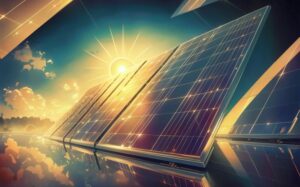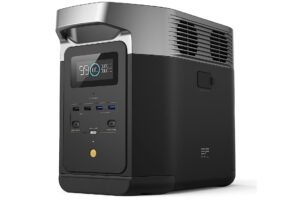Green hydrogen projects could be exempted from India’s ‘ban’ on imports of Chinese equipment

Green hydrogen developers in India could be allowed to import important equipment such as low-cost solar panels for their projects from China, despite a long-term de facto “ban” placed on imports by the Indian government.
Officials are also considering lifting some import duties for renewables and electrolysers, while developers have also petitioned for the removal of restrictions on state-owned energy companies buying electrolysis equipment from India’s immediate neighbours, including China, according to the Indian Express newspaper.
The Ministry of New and Renewable Energy (MNRE) introduced an approved list of models and manufacturers (ALMM) for solar PV panels in 2021, which excluded Chinese manufacturers. These companies usually produce equipment far more cheaply than foreign rivals.
All solar projects receiving government support — which encompasses the vast majority of solar-based green hydrogen proposals in India — must use panels made by the predominantly Indian manufacturers on the ALMM, under the 2021 regulation.
Together with a 40% customs tax on solar module imports, this effectively amounts to a ban on imports of Chinese solar panels, despite the country supplying 83% of all India’s solar equipment pre-2021, and adding extra cost for India’s green hydrogen producers.
Electricity production — including the cost of building renewable energy capacity — makes up around 70% of the final levelised cost of hydrogen.
Article continues below the advert
But officials are now considering exempting green hydrogen projects from having to pick a supplier from the ALMM, after meeting renewable H2 developers in mid-October, according to the Indian Express, which saw the minutes of the meeting after making a freedom of information request to the MNRE.
To further complicate the issue, the MNRE in March temporarily lifted the requirement to use the ALMM until March 2024, when it became clear that Indian manufacturers alone would be unable to meet the 70GW of solar PV tenders issued by the government.
The ban has seen the number of installations of China-made solar panels plummet by over 70%.
But the exemption for green hydrogen developers would be long term, allowing them to import Chinese solar PV panels even after the ALMM is reinstated.
The minutes suggest MNRE is also weighing up a proposal to exempt renewable H2 export projects in India from duties and taxes on equipment imports, allowing green hydrogen developers to bypass the 40% import tax on solar PV modules until 2035.
The exemptions could also allow developers easier access to Chinese-made electrolysers, which are significantly cheaper to buy than Western-made equivalents, even if they tend to be less efficient.
In fact, China is expected to have more than 40GW of electrolyser manufacturing capacity by the end of 2024 — well over half the projected global capacity of 71GW — which will far outstrip global demand for electrolysers in 2025, according to research house BNEF.
India is targeting five million tonnes of green hydrogen production capacity by 2030, requiring 125GW of renewable energy installations and around 60GW of electrolysis capacity — however projects are still at a very early stage of development.
“We will do everything in our power to make India be competitive in producing green hydrogen and to achieve the targets set out in the National Green Hydrogen Mission (NGHM),” said India’s energy minister Raj Kumar Singh in a statement after the meeting in October.
However, reports are now starting to surface of technical issues with some Chinese-made electrolysers, including those at the world’s largest green hydrogen project, Sinopec’s 260MW Kuqa scheme in Xinjiang.
India has earmarked 44 billion rupees ($520m) to incentivise the domestic manufacture of electrolysers, but as yet its large-scale factory capacity is non-existent, meaning that it will likely be dependent on foreign imports of electrolysers to meet its 2030 targets.
Developers also asked Singh to remove restrictions on government-owned companies — such as cash-rich energy giant and green hydrogen producer Indian Oil — importing “finished products” such as electrolysers from countries bordering India, such as China.
Under current rules, state-owned companies must secure a permit to import certain products, which must be approved by two separate ministries.
A revised list of approved wind turbine models and manufacturers (RLMM) issued last month includes Chinese manufacturer Envision, however, like other foreign-owned entities on the list, only its Indian subsidiary is listed.
The ALMM, RLMM and other import restrictions were initially introduced in the aftermath of a serious skirmish on the India-China border in 2020, in which 24 people were killed.
However, while India banned the use of around 300 Chinese-owned digital products, including the popular apps TikTok and WeChat, it has stopped short of issuing an outright ban on imports of physical products made in China specifically, citing its commitments under the World Trade Organization (WTO).




